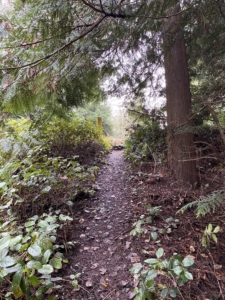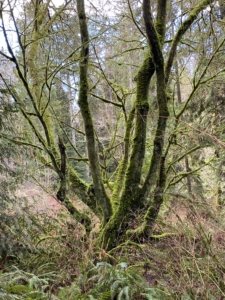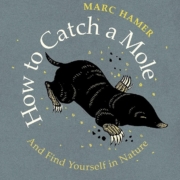How to Catch A Mole
When my friend Madelon told me about this book, I was skeptical. A book about catching and killing moles? A philosophical, poetical book?
Every summer, Madelon and I get together — at least a few times — to write. Admittedly, we don’t always write. We sit in her garden and talk. We sometimes walk. If the weather is damp (or the heat, excessive), we sit in Madelon’s living room, surrounded by her books. She told me about Marc Hamer’s How to Catch a Mole (Greystone Books, 2019) on one visit last summer. At the next visit, she read aloud from it.
When I am out in the countryside, walking or hunting, I become solitary and leave my man-nature behind. I become a different kind of creature: something more fluid, free, adaptable and instinctive. This is something developed in me when I was young and living in the wild. Living moment to moment with no thought or feeling, no ideas or obvious mental process going on, just instinct, an awareness of the field, but not a separate awareness of myself being in the field. We seem to become the same thing. (p. 49)
Each time I visited, I heard more. Finally, Madelon handed me the book. “You should read it.”
Marc Hamer lives in Wales. He has done other things — art school, notably — but How to Catch a Mole, his 2019 memoir, chronicles his years working as a twrchwr (Welsh for molecatcher) and brings to vivid life his love and awe in the presence of nature.
It’s hard to share examples when there is something worth quoting on every page:
There are no people to watch, to see, or to know that I am here in the early light with the singing birds. There is winter sun and websilk woven through the silhouetted branches, and it sparkles like rippling water. (p. 110)
You learn a great deal about moles in the book, and at moments the lens focuses only on moles. But more often the lens widens and you see that Hamer’s subject is always life itself:
The closer things are to being nothing, the more tender they become, and the more tender are the feelings they bring out: a newborn child, a hatchling, a dying old man. A dried seed head surrounded by others; a skeletal leaf floating on a pond; a piece of broken pottery in a pile of soil; half an eggshell lying on the grass; a small bone from a rabbit’s leg lying in the sand dunes. Small things that are near their end. (p. 146)
Hamer is now retired from mole-catching, an event he chronicles in this book. And I can’t skip telling you that each chapter ends with a poem, often to or about his wife, the beloved Peggy, waiting at home (who is also — I was pleased to learn — the suspense novelist Kate Hamer).
He is still writing. In 2021 his Seed to Dust was published to acclaim. But I want to end this review with this longish (and ominous) passage from How to Catch a Mole, in his chapter “The Future”:
A fine-looking garden is a sterile place. A perfect green lawn is only kept that way by continually dosing it with chemicals. A lawn that is not treated will naturally become home to a massive number of species of birds and worms and native wild plants, crane-fly larvae, beetles, invertebrates. There are people who do not want living organisms in their gardens, and they spray their lawns with chemicals that kill the worms so there are no worm casts, moles, or birds pecking at the grass, then they spray it with chemicals to kill the crane-fly larvae so there are no magpies, jays or crows digging up the grass to get them, and so there will be no daddy longlegs in the summer; in the spring they spray it with chemicals to reduce the growth of the grass so they do not have to mow it so often and other chemicals are used to kill the moss and weeds and make the grass greener. For some, even mowing is too much, so they pay to have the grass stripped off and replaced with plastic grass that you can smell as it warms under the hot summer sun and will last until the world ends. (p. 190)
He calls his life “a small life,” and “a life handmade by me.” It is a life that seems as far from plastic grass as one can get.



